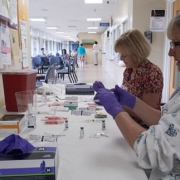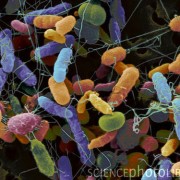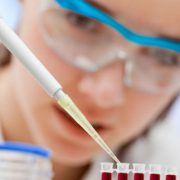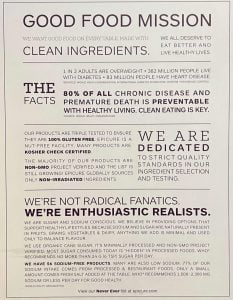More Misconceptions About Celiac Disease
 Dr. Şafak Kızıltaş (Acıbadem University Department of Internal Medicine Faculty Member and Acıbadem Kozyatağı Hospital Gastroenterology Specialist Professor, ) talks about misconceptions about celiac disease.
Dr. Şafak Kızıltaş (Acıbadem University Department of Internal Medicine Faculty Member and Acıbadem Kozyatağı Hospital Gastroenterology Specialist Professor, ) talks about misconceptions about celiac disease.
- raillynews.com 1
Celiac disease, which can occur in any period from infancy to old age, is known as “thousand and one faces” due to its symptoms and the discomfort it causes. The gluten substance found in wheat, barley, oats and rye causes damage to the small intestines in people with genetic predisposition. The most effective treatment for the disease is to avoid gluten.
1. Celiac is the disease of the modern age
No, on the contrary, it is a disease that dates back to before Christ. Celiac, the world’s most common genetic disease, is a disease that affects the small intestine and many organs and affects the immune system. The traces of the disease, named after the word “coeliaca”, meaning abdomen in ancient Greek, date back to BC. It is found even in the 1st century. Archaeological remains show that humans have been afflicted with this disease since they began feeding on the first improved wheat in Mesopotamia. The first diagnosis was made in 1888, when the British pathologist Samuel Gee showed histological findings of the disease in small intestine biopsies. It was also confirmed in the 1950s that the causative agent of the disease was gluten in wheat.
2. It is not a common disease
On the contrary, it is the most common disease in the world. Stating that the incidence of the disease was thought to be one in 4 to 5 people in the first years of its definition, Gastroentrology Specialist Prof. Dr. Şafak Kızıltaş said, “However, studies conducted today reveal that celiac disease is observed in one out of every 100 people in many societies and in our country. This rate rises to one in 60-70 people in Northern Europe and 5-6 percent in Western Europe. Judging by the number of patients identified, it can be compared to the above-water part of the iceberg. Undetected patients are thought to be a much larger mass,” he says.
3. Celiac is not a genetic disease
No! This disease is inherited. If celiac is present in one of the identical twins, it is also seen in 75 percent of the other twins. It is found in 20% of first-degree relatives and 5% of second-degree relatives.
4. It occurs in childhood
The manifestations of this disease can be very different. While it can occur in early periods such as infancy and play childhood, there are also late cases that can be defined at the ages of 70 and 80. In other words, celiac is a disease that can be seen at any age.
5. The only symptoms are swelling and abdominal pain
Celiac has many symptoms. The classic findings are abdominal pain, diarrhea, anemia, inability to gain weight, short stature, physical and mental retardation, problems in tooth enamel and bone resorption.
6. Celiac only causes disease in the digestive system
On the contrary, celiac can cause various diseases in all body systems. Menstrual irregularity, infertility, and frequent miscarriages in pregnancy can be caused by celiac disease. Gastroentrology Specialist Prof. Dr. Emphasizing that it can cause many different diseases, “Celiac, liver function problems, heart muscle disorder, D and B group vitamin deficiency, folic acid deficiency, dermatitis, mouth aphthae, ulcer, neurological disorders, depression, kidney and joint disorders.
7. Irritable bowel syndrome is caused by celiac
Irritable bowel syndrome is a different disease. However, it is known that the incidence of celiac increases to 2-3% in patients with dyspepsia (abdominal pain, tension, early satiety, loss of appetite, nausea, belching) and irritable bowel syndrome.
8. Reducing gluten cures celiac
Even if one-eighth of a teaspoon of flour is consumed, the intake of gluten triggers the disease. The mechanism is as follows: During the absorption of food in the intestines, the body’s defence mechanism fights against gluten and the intestinal wall is damaged when antibodies attack the brush-like surface in the small intestine. Due to this damage, nutrients are excreted through the digestive tract without being absorbed. Consuming less gluten-containing foods does not cure the problem, even if it alleviates it a bit. Celiac patients should eat foods that do not contain gluten in order to avoid this problem.
9. It is enough to have a blood test for diagnosis
A blood test alone is not enough. The most important method for diagnosis is the physician’s examination, listening to the patient’s history well, and physician awareness. Stating that celiac antibodies are checked in blood tests, Gastroentrology Specialist Prof. Dr. Şafak Kızıltaş points out that the positivity rate of celiac antibodies (Anti-EMA IgA, Anti-ttg IgA) is high in the disease and states that small intestinal biopsies should be taken.
Sometimes, small bowel biopsies may not be sufficient. In such cases, tissue type determination (HLA DQ2-HLA DQ8) is recommended. These tissue types are positive in 95 percent of celiac patients, therefore it plays an important role in showing whether or not Celiac disease is present.
10. Just stay away from gluten-containing foods
Although the most effective method in the treatment of celiac is not to eat foods containing gluten, cleaning and cosmetic products containing gluten should also be avoided.
11. The gluten-free diet may be interrupted from time to time
The most important step in the treatment of this disease is to stop gluten consumption. Moreover, this diet should be continued for a lifetime without any interruption. The small intestine of people who take care of their diet begins to improve in 6-12 weeks. At the end of one year, 70 percent of the patients recover completely. Some drugs that suppress the immune system are used in patients who do not improve within a year.
1 https://www.raillynews.com/2022/01/colyakla-ilgili-dogru-bilinen-11-yanlis/













